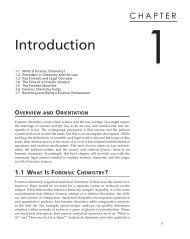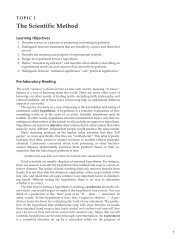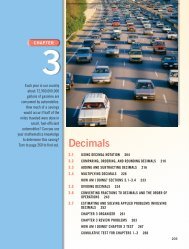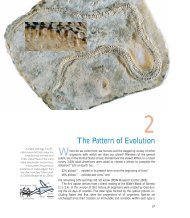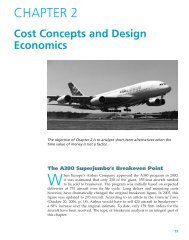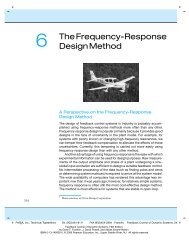CHAPTER 3 - Educators
CHAPTER 3 - Educators
CHAPTER 3 - Educators
Create successful ePaper yourself
Turn your PDF publications into a flip-book with our unique Google optimized e-Paper software.
3.1 Introduction<br />
72<br />
Decisions, both great and small, depend in part on estimates. “Looking down the barrel” need<br />
not be an embarrassment for the engineer if newer techniques, professional staffing, and a<br />
greater awareness are assigned to the engineering cost estimating function.<br />
—Phillip F. Ostwald (1992)<br />
In Chapter 1, we described the engineering economic analysis procedure in terms<br />
of seven steps. In this chapter, we address Step 3, development of the outcomes<br />
and cash flows for each alternative. Because engineering economy studies deal<br />
with outcomes that extend into the future, estimating the future cash flows for<br />
feasible alternatives is a critical step in the analysis procedure. Often, the most<br />
difficult, expensive, and time-consuming part of an engineering economy study<br />
is the estimation of costs, revenues, useful lives, residual values, and other data<br />
pertaining to the alternatives being analyzed. A decision based on the analysis is<br />
economically sound only to the extent that these cost and revenue estimates are<br />
representative of what subsequently will occur. In this chapter, we introduce the<br />
role of cost estimating in engineering practice. Definitions and examples of important<br />
cost concepts were provided in Chapter 2.<br />
Whenever an engineering economic analysis is performed for a major capital<br />
investment, the cost-estimating effort for that analysis should be an integral part of<br />
a comprehensive planning and design process requiring the active participation of<br />
not only engineering designers but also personnel from marketing, manufacturing,<br />
finance, and top management. Results of cost estimating are used for a variety of<br />
purposes, including the following:<br />
1. Providing information used in setting a selling price for quoting, bidding, or<br />
evaluating contracts<br />
2. Determining whether a proposed product can be made and distributed at a<br />
profit (for simplicity, price = cost + profit)<br />
3. Evaluating how much capital can be justified for process changes or other<br />
improvements<br />
4. Establishing benchmarks for productivity improvement programs<br />
There are two fundamental approaches to cost estimating: the “top-down”<br />
approach and the “bottom-up” approach. The top-down approach basically uses<br />
historical data from similar engineering projects to estimate the costs, revenues, and<br />
other data for the current project by modifying these data for changes in inflation<br />
or deflation, activity level, weight, energy consumption, size, and other factors.<br />
This approach is best used early in the estimating process when alternatives are<br />
still being developed and refined.<br />
The bottom-up approach is a more detailed method of cost estimating. This<br />
method breaks down a project into small, manageable units and estimates their<br />
economic consequences. These smaller unit costs are added together with other<br />
types of costs to obtain an overall cost estimate. This approach usually works best<br />
when the detail concerning the desired output (a product or a service) has been<br />
defined and clarified.



